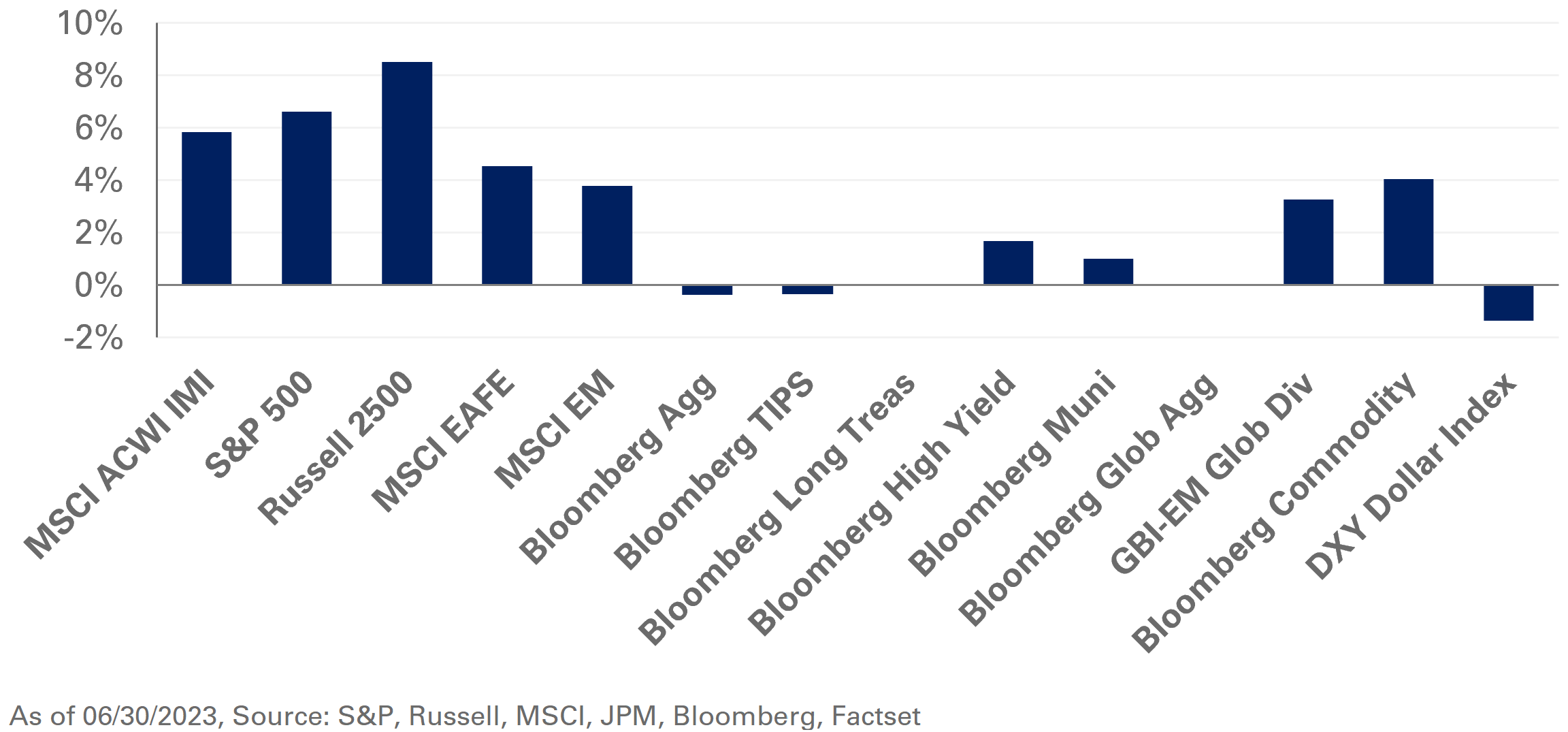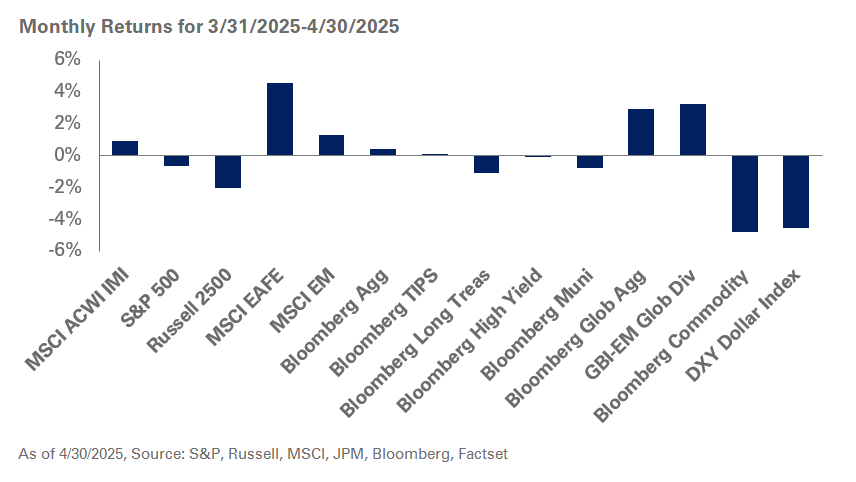With the Federal Reserve opting to skip an interest rate hike and the slew of robust economic data, the U.S. economy continued to flex its muscles in June. Despite the Fed’s decision to forgo a rate hike in June while ascertaining the health of the labor market and economy, Fed chair Jerome Powell reiterated the central bank’s job isn’t done until inflation comes down to its stated target of 2%, ratcheting up the likelihood of more rate hikes in the future.
In fixed income, returns were mostly in the red driven by the upward pressure on interest rates. In particular, U.S. Treasury yields moved higher with 10-year yields increasing 18 basis points. Credit markets were higher though mainly due to the high carry over Treasuries. High-yield bonds returned 1.7% in June with spreads tightening to 390 basis points from 455 basis points.
Meanwhile, U.S. markets outperformed on a relative basis with the S&P 500 Index gaining 6.6%, while the MSCI EAFE Index was up 4.6% in June. During this period, emerging markets also trailed the U.S. with the MSCI EM Index returning 3.8%. Growth stocks modestly outperformed value equities in June with the Russell 1000 Growth Index gaining 6.8% and the Russel 1000 Value Index up 6.6%.
Elsewhere, energy markets ended last month higher with WTI Crude Oil spot prices 3.7% higher. Overall, the Bloomberg Commodity Index increased 4% in June.
Keeping in mind the dynamics of U.S. equities, we suggest investors reduce S&P 500 exposure, while maintaining U.S. large-cap value positions. We also recommend investors increase exposure to U.S. high-yield bonds and broadly evaluate the risk-return benefit of fixed income. Lastly, we suggest holding greater levels of cash within safe-haven fixed-income exposures and encourage investors to maintain greater levels of portfolio liquidity.




